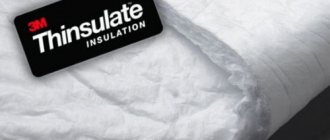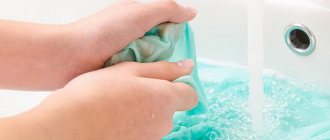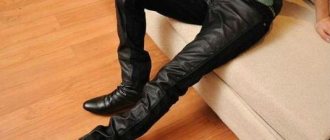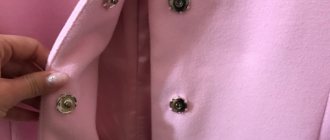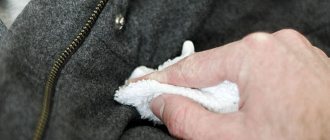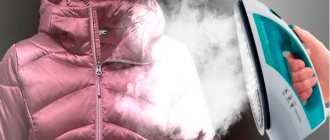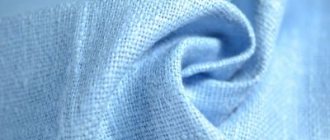In the winter season, as well as in the off-season, many representatives of the fair sex prefer to use stylish and elegant coats. This thing becomes especially relevant in the autumn-spring period, when the weather becomes warm, sunny and pleasant.
The main advantages of products of this type are:
- warmth and naturalness;
- stylish and elegant look of the item;
- the canvas is resistant to wind without allowing it to pass through;
- ensuring air exchange even when wearing the product in a warm room;
- With proper care, the material does not stretch or wrinkle;
- a dark-colored item gets dirty very little , which makes the product practical and versatile;
- lightness and comfort while wearing.
These coats are most often made from soft cashmere or thick wool.
The main advantage of these products, in addition to their spectacular appearance and warmth, is naturalness.
Strong moisture can ruin both cashmere and wool items, so in order for the product to retain its shape and presentable appearance, it is recommended to avoid using it in heavy rain.
Can I wash my coat myself?
To answer this question, you need to look at the label. If the recommendations only include dry cleaning, then it’s not worth the risk. Otherwise, follow all the instructions - you may think that 40 degrees is not much different from 30, but then be prepared to take out a thing a couple of sizes smaller from the machine. If there are no identifying marks on the coat (for example, this often happens with clothes from vintage stores), then it is better not to test it for durability.
View gallery
14 photos
Chevron
Removing stains
If several separate stains appear on your coat, you can get rid of them locally. There are several effective methods:
- Dissolve a small amount of shampoo or dish soap in warm water. Moisten a clean cloth or cotton swab with the resulting solution and apply to the stain. Wait until the solution is completely absorbed and wipe the surface from the edges to the center of the stain. If necessary, repeat the procedure. Then the soap solution with any remaining dirt is carefully washed with a cloth moistened with running water. Blot any remaining moisture with a clean terry towel and leave the product to dry naturally.
- You can get rid of fresh stains using talcum powder or regular potato starch. Sprinkle it thickly on the problem area and after an hour, simply shake out the remaining powder that has absorbed grease and dirt.
- A light woolen coat is cleaned of dirt with the following solution: 4 teaspoons of ammonia mixed with a teaspoon of table salt. A cotton pad is moistened in the resulting solution and used to wipe the surface. Wash off the mixture with a soft damp cloth.
Another proven method of removing stains is 3 percent vinegar, which is used to treat the contaminated area. After 30 minutes, it is washed off with running warm water along with the dirt.
Basic rules of care
Some recommendations are appropriate for coats made of any material.
- Firstly, never dry it near the radiator. In general, never dry anything near the radiator - too dry and hot air has a bad effect on most materials.
- Secondly, it should hang on wide hangers. Forget about wire hangers - the coat's own weight will put too much pressure on them and will certainly become deformed at the shoulders.
- Thirdly, store your coat in a textile case. Hang moth repellent in the closet and make sure it is not too crowded. But it’s better to forget about boxes and suitcases: not all models can be steamed, and getting rid of creases will not be so easy.
Wool
You can clean your coat of dust or, for example, cat hair using a sticky roller or a velor brush. The first method is faster, but the second will allow you to further smooth out the pile - the item will look fresher.
Sticky roller, Paterra, RUB 314. on ozon.ru
Velor brush, Vetta, RUB 259. on ozon.ru
For those who purchased a coat made of unpretentious drape, you can also clean it from dust with a soft clothes brush.
Brush, Steamery, 1922 rub. at mrporter.com
If you are thoroughly wet, place your coat on a terry towel on a flat surface to remove excess moisture.
Cashmere
The main problem that can arise with a cashmere coat is the appearance of pilling. Under no circumstances should they be torn off by hand, otherwise you will damage the already delicate structure of the material. The easiest way to get rid of a large accumulation of matted particles is to use an electric machine. Well, a special comb will help you finish the job. By the way, he will put his favorite jumper in order.
Machine for removing pellets, Philips, RUB 1,190. on technopark.ru
Comb for cashmere, 600 rub. on 12storeez.com
Leather and suede
Coats made from these materials will only look better over the years - small abrasions and even scratches add a special charm. But the appearance of stains is undesirable, so at the beginning of the season, treat the item with a water-repellent spray. Small stains can often be removed with shoe cleaner. But be sure to test it in an inconspicuous area before using it.
Set for the care of leather, suede and textile products, Liquiproof Labs, RUB 3,097. at mrporter.com
Synthetics
A coat made of artificial materials, such as nylon, should also be treated with impregnation - in this case, it is unlikely to be in any danger. But remember that you shouldn’t thoughtlessly throw even the most unpretentious-looking thing into the washing machine - if, for example, you got a model with a membrane, then one cycle at 40 degrees will completely destroy all its properties.
Leather coat care
Leather is a delicate material that requires appropriate care. Do you regularly cleanse and moisturize the skin of your face, hands, and body? This is approximately how you should care for a leather coat.
During the production process, a thin protective layer is applied to the finished coat, which protects the skin from adverse weather influences. Without this protection, the product will quickly lose its decent appearance, the skin will absorb unpleasant odors, stains and greasy areas will appear, etc. It is clear that machine washing is out of the question here. But it is quite possible not to send the item to the dry cleaner, but to put it in order yourself. You just need to know which cleaning methods to use for different types of dirt.
Important! Any chemical product should first be tested on the skin from the inside of the product.
5 types of contaminants and ways to remove them:
- Minor stains in the form of drops or streaks.
Wash with soap and water solution, wipe with a dry cloth.
- Greasy area of the collar and sleeves on the cuffs.
Wipe with a cotton swab soaked in alcohol or a special composition (leather cleaner).
- Traces of ink or felt-tip pen.
Removed with medical alcohol or the same cleaner.
- Grease stains.
Mix a paste of talcum powder (or chalk) and water, spread it thickly on the stain and leave it on for a long time (preferably until the morning). Then just wash it off.
- Salt stains in the winter season.
Removed with vinegar.
5 additional tips on how to care for your leather coat:
- The product should not be stored folded. Let it hang on a hanger in the closet.
- After washing, do not put on your coat until it is completely dry. Otherwise, the thing will stretch and lose its shape.
- Coats should not be dried on heating devices. It will become deformed and the appearance will be ruined.
- The leather should be cleaned very delicately, otherwise its outer layer may wear off.
- Don't leave stains for later. The fresher they are, the easier it is to remove them.
After cleaning the product and removing all stains, apply a special leather care composition, which will serve as a new protective layer.
Is it really possible to remove a small stain yourself?
Yes. Small splashes of mud can be allowed to dry and then brushed over with a soft brush. coffee or wine stain should be immediately blotted with a microfiber cloth or at least a napkin (just do not rub it under any circumstances), and then carefully try to remove it with a warm soapy solution. remove the greasy stain - you need to sprinkle it on the stain and leave it under a load overnight.
But we do not recommend trying to solve the problem in all possible ways at once. Of course, popular advice (using ammonia, gasoline or soda) may be useful, but there is a risk that along with the stain you will simply discolor everything around - and no dry cleaning will help with this.
Tips for caring for a wool coat
A beautiful wool coat is a very elegant piece of clothing and also not cheap. This thing looks very stylish, impressive and at the same time strict. But this piece of clothing will delight you with its appearance only if you know how to properly care for your coat.
- Storage rules
To prevent a wool coat from losing its original appearance, it should be stored correctly. Firstly, the hanger on which the item hangs must exactly fit the size of your shoulders. Otherwise, the shape of the product may be damaged and the fit may be compromised. Next, be sure to empty your pockets so that no items remain in them. The most suitable place to store woolen items is a room that is fresh and, importantly, not cramped. Plus, it should be sufficiently ventilated. For example, this could be a large, dark, cool closet. In the summer, it is better to put a special cover on a woolen product.
- Cleaning and washing rules
How to care for a wool coat, in particular, how to clean and wash it? There are special brushes for cleaning, but it is not recommended to wash woolen items; if you really need to, take them to the dry cleaner. Although there are detergents that are designed specifically for washing wool products. And if you still decide to use them, firstly, choose very carefully. And secondly, first check (somewhere on the back of the product) how the composition will affect the fabric, whether it will fade and how it will react in general. It should be dried away from heating devices, straightened out well.
- Rules for removing stains
Remember: when wiping a stain, you need to move from its edge to the center so that a halo does not form around it, even wider than the stain itself. Of course, a fresh grease or oil stain is easier to remove, so don't leave it for later. You can do this with an iron and some white paper napkins. They should be placed on the stain and under it (outside and on the inside of the product), and then ironed well with a not very hot iron. There are other ways to remove stains. For example, a solution prepared from ammonia (1 tablespoon), detergent (1 tablespoon) and warm water (200 g). Simply soak a cotton pad in the mixture and wipe the stain. To clean a greasy collar, the solution is as follows: a glass of water, 1 tbsp. a spoonful of salt and 1 teaspoon of ammonia.
It will be much easier to care for a woolen coat if, when purchasing, you pay attention to models made from special fabrics with protective impregnation against moisture. This, for example, could be Storm System or Rain Systems. Fabrics of this type are resistant to dirt and moisture. Special impregnation does not allow wool to absorb water, repels dust, and thanks to this the product looks decent for a long time. This coat can be safely dry cleaned. So, even if you are faced with the question of how to care for a light coat (such things get dirty more and faster), impregnated fabric will be the solution to the problem.
- How to care for a drape coat
Drape is also a woolen material, but quite rigid. It requires repeated cleaning throughout the season. A microfiber brush is suitable for this. Just run it over the coat, moving in the direction of the fabric pile. Sticky debris can also be removed with a damp sponge.
More serious stains can be removed with a soap solution or a store-bought wool cleaner. You need to apply a little mixture to dirty places, wait for the solution to take effect, and then gently wipe with a cloth soaked in water.
Grease stains on the collar are removed with ammonia and salt (make a solution). You should first check somewhere on the inside to see how it will affect the fabric.
How often should I dry clean my coat?
Despite the fact that we recommend contacting a dry cleaner in any unclear situation, the process of treating coats with special solutions also harms the material. Therefore, do not overuse if you want to extend the life of your clothes. It is enough to hand over your coat at the end of the season, before you put it away for storage, and in this case you will not need the help of professionals even by next fall. But if this is still not enough, then focus on the frequency of 1-2 times a season, no more.
View gallery
10 photos
Chevron
General rules
Washing outerwear at home requires obligatory adherence to certain rules, because wool is a capricious material that reacts to ordinary washing powders and external factors. The coat fabric in question may become discolored, shrink, lose its original shape, or even come apart at the seams (in some models, individual pattern pieces are glued to each other to hold the shape).
If you decide to wash your wool coat at home, remember:
- In case of local contamination, clean only them; do not completely process the coat.
- To clean wool, use exclusively gel-type laundry detergents or special shampoos for delicate fabrics, because they are non-aggressive, easily dissolve in water and can be completely rinsed out.
- Be sure to check the manufacturer's information on the coat label to determine whether your wool coat can be machine washed or hand washed.
Study the composition of the fabric. If the manufacturer has specified additional synthetic materials such as acrylic, elastane, polyamide, nylon, lycra or polyester, then such material can be safely washed by yourself. Synthetics make the product more wear-resistant and durable.
A couple of useful tips:
- Ironing them through gauze soaked in a weak vinegar solution will help get rid of shiny areas (pockets, collars, lapels, cuffs).
- You can make the fabric soft and prevent pilling by using a spoonful of glycerin mixed in water during the first rinse.
A tablespoon of vinegar added to the water during washing helps preserve the color.
Does the lining require maintenance?
Definitely. For those who own a coat with a liner, it may be enough to unfasten it and wash it in a machine at a low temperature - this procedure will allow you to refresh the item in the middle of the season. If we are talking about a lining that cannot be removed, then you will have to wait for a trip to the dry cleaner. Also be careful with perfumes and deodorants with strong odors - wool, leather, and suede absorb odors perfectly. For the same reason, by the way, do not forget to wear a cotton T-shirt under a jumper - this way the item will not become soaked with sweat.
Is it possible to wear wool and cashmere coats in rainy weather?
A little rain will not spoil or damage natural fabrics in any way, however, upon returning home, the item must be thoroughly dried, treated with a soft brush and carefully straightened, giving the product the correct shape. When wearing such an item, even with slight dampness and humidity, it is recommended to use a wide umbrella, being careful not to wet the fabric. In addition, it is advisable to reduce the time spent in light rain to a minimum if possible.
It is not recommended to wear these items of women's outerwear in heavy rain. Such weather is especially contraindicated for delicate and capricious cashmere products, which can easily lose their shape after being heavily wet.
Items made of wool are somewhat thicker and coarser than cashmere in terms of density and practical qualities, so a woolen item will withstand strong humidity more steadfastly. However, even in this case, it is recommended to use a product made from this material only in cases of extreme necessity.
In light rain, it is very undesirable to wear products with fur inserts that cannot be removed or unfastened. In addition, light-colored items may become stained or stained after heavy or light rain. It is usually not recommended to use products of this type in high humidity.
It is much better to wear practical models made of bolognese fabric, leather or raincoat in damp or rainy conditions.
However, if the choice is between cashmere and wool, dense wool items will withstand wet weather much better and more calmly than soft cashmere items.
Is there a way to protect a long coat from splashes?
During the off-season and thaws, you need to be especially careful. Firstly, try to stay away from the roadway, otherwise some driver will not have time to slow down and will splash you with a puddle. Secondly, there is a much less obvious danger - small splashes that fly from under your feet and remain on the back of your trousers and the hem of your coat. Try not to reach cruising speeds to reduce the scale of the disaster. You can also treat the bottom with water-repellent impregnation - this applies to products made of suede or leather. Well, you already know what to do if dirt still sticks to the thing.
Water repellent, Hydrop, RUB 2,240. on lamoda.ru
Preparing the coat for washing
Initially, you need to determine how you can wash a woolen product: by hand or in a washing machine. You can find out by examining the label on the clothing.
Important! If the coat is made of 100% wool, it cannot be washed. When containing several types of materials, washing is allowed.
Inspect the product. To do this, you need to hang it on a hanger and walk over its surface with a clothes roller.
This will help get rid of pellets, threads, dust and hairs. Next, clean the material with a soft bristle brush. You can dampen the brush a little with soap suds to get rid of stains and dirt.
Use only soft sponges and brushes for cleaning. Otherwise, the woolen product may be damaged.
Then you need to unfasten all fur elements and accessories. Also remove metal jewelry and buttons, as they may become lost or rust.
Before washing, it is recommended to unfasten or tear off the inner lining and wash it separately. Then you need to turn the coat inside out and fasten all the zippers.
Next, the clothes are placed in a special bag or cover for washing.
You can use a duvet cover or a regular pillowcase.
What to do if your coat shrinks after washing
Don’t panic right away; if all the rules and recommendations were followed during washing, the item can be restored. But still, it is worth understanding that sometimes it will not be possible to return the original appearance of the product.
If your coat shrinks after washing, you can try stretching it in the following way:
- Rinse the product in cold water and squeeze out the water a little so that it does not flow in a stream;
- You need to lay out a terry towel on the table and place a wet woolen coat on top of it;
- Place another towel on top of the product to absorb excess water;
- Gently straighten and stretch the item to its original size. Particular attention should be paid to the length of the sleeves.
The product is left to dry horizontally. The towel needs to be changed periodically.
A woolen coat should not be kept on a damp surface for a long time, as it may acquire an undesirable, musty odor.
Note! The item that has shrunk should be laid out on a light towel that will not fade. Otherwise, the product will be completely damaged.
Stretching clothes with an iron
If the wool product has shrunk, then you can use a regular iron. The ironing board should be covered with a cotton sheet. Then lay the coat on the surface and begin ironing it through a cotton napkin. At this time, it is necessary to stretch the clothes to their original size.
This method is often used for items made from mixed fabrics, but if the item of clothing is made from 100% wool, the effect may be absent.
Preparatory stage
Following simple rules will help make laundry preparation easier. Preparation for processing the coat is carried out in several stages:
- Inspect the tag. When carefully studying the product label, pay attention to the pictures shown. A sign prohibiting washing is depicted in the form of a basin crossed out on both sides. Such a thing can become deformed upon prolonged contact with water. The best option is to use dry cleaning services.
- Definition of fabric. If washing is not prohibited by the manufacturer, it is important to find out what material the coat is made of. Methods for cleaning natural wool fabric differ from processing synthetic products.
- Preparing for washing. Pockets of outerwear should be cleared of all unnecessary items. Wash the coat inside out, after buttoning it first.
- Choice of remedy. The washing composition for wool is selected as closely as possible to the characteristics of the fabric fiber composition.
It is necessary to turn the coat inside out before washing.
Polyester is a universal material
Products made from polyester do not deteriorate after washing and almost do not wrinkle. But in order not to ruin your coat, you should follow certain rules.
It is worth considering that when heated strongly, synthetics “remember” wrinkles well, so they are difficult to smooth out. This means that it is not recommended to wash them in hot water.
It's not so simple with powder either. Polyester does not tolerate chlorine. Choose a product without this aggressive substance.
You can wash only at a temperature not exceeding 40 degrees. All zippers and buttons should be fastened in advance; you can place them in a special bag for washing. To avoid wrinkles, turn off the spin cycle.
After the process, the coat should only be dried on a hanger. If you wash by hand, do not twist or wrinkle the product.
Hand wash drape
A drape coat also requires delicate handling. You can only use hand wash without twisting, twisting, or strong friction.
Soak the item in cold water, adding detergent for delicate fabrics. Hot water will not work; the product may shrink significantly.
If you see a greasy stain, sprinkle it with starch or talcum powder. Light-colored items should be cleaned with a solution: 1 tbsp. ammonia per 1 liter of water.
Non-greasy stains can be cleaned by dissolving liquid baby shampoo in water.
Don't forget the air conditioner. Some housewives have adapted to adding hair conditioner to the water. It gives the fabric a pleasant softness.
What to do after washing? Any thing needs to be straightened and given a flawless look. Wrinkled clothes will make you look like a sloppy housewife!
